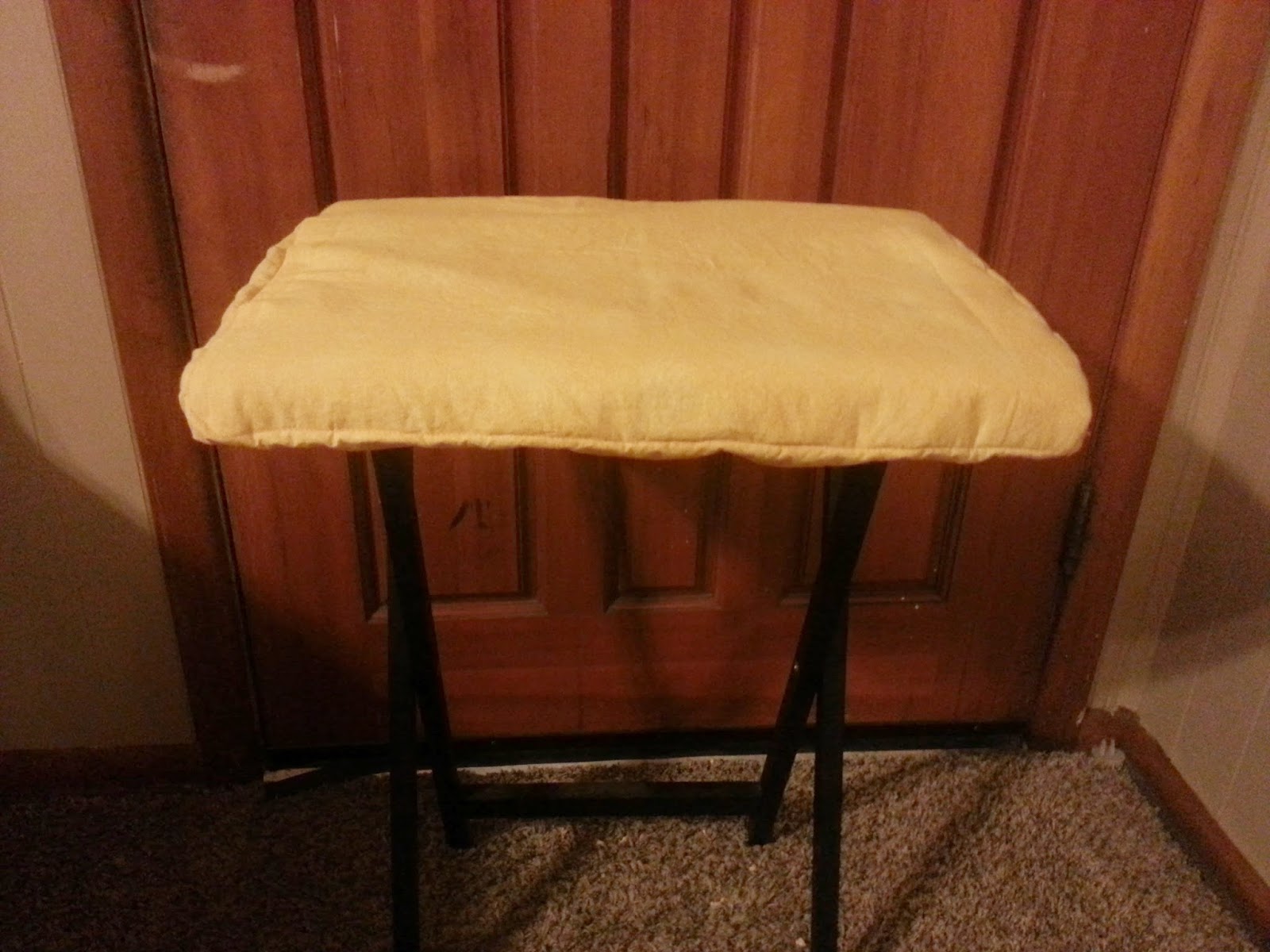I recently needed an iron. I've done great sewing and not having one so far but I finally started a project that I NEEDED one. My wonderful mom bought me one but I still needed an ironing board. Not wanting to ruin a perfectly good t.v tray with a staple gun, I decided to make something less permanent.
I made some pot holders with a heat resistant type batting and had some left over. I also happen to have a big piece of yellow fabric left over from a diaper cover I made. Put these two together and BAM I have something wonderful.
First I measured my table. I would assume this is a standard measurement but we all know what happens when one assumes. With that said, you should probably measure your own t.v tray. I cut my batting to be 18" by 19" doubled. This left me a little extra to go over the sides of the tray. (I don't want to ruin my tray and thought that two layers of batting should keep it protected. You could probably use one layer though, it's really your preference.)
Lay your cotton fabric print side down on the floor or another flat surface that you can easily walk around. Once everything is flattened, lay the batting on top. You want to make sure you have about 6" extra on every side.
I marked out 5" and 6" on the cotton fabric every once in a while and connected the dots to give me a straight line. If you have a yard stick you could probably do this much easier without all the work.
Blue lines are the 6" mark on the sides and the pink is the 5" mark.
I drew straight down on the corners of the batting.
Once you have the lines drawn, cut around them to create something that looks like the picture above.
Once everything was cut and ready, I pinned the batting square to the cotton. I would pin this often because it can/will shift. If you use one layer it won't shift as much but I used two layers causing more shifting.
I don't really know why, but I cut the corners of the batting. Maybe to give me more play in the corners....not really sure and is optional.
After everything is pinned, sew the batting onto the cotton.
It will probably look something like this once your down. Some of the fabric bunched a little, but this wasn't very notable once I add the elastic and put it on the table.
Next you want to sew the corners together. I put my 5" and 6" lines together and sewed it from there.
After all four corners are done, pin a casing for the elastic. I will use 1/2" elastic and made the casing 1". It is up to you on how big you want your casing and elastic. I would recommend using a wider elastic since you'll need so much and it's going over a bigger object.
BE SURE TO LEAVE AN OPENING to string the elastic threw....I always forget this.
Once your casing is ready, starting stringing it in.
My elastic measured 33.5". This held the pad on tight while easily stretching over the table. Make the elastic shorter if you want the pad to be on tighter. (Put a safety pin on the end being run through the casing to help you hold on to something while moving the fabric.)
I clipped the end of the elastic to the opening to make sure it didn't get lost.
Yup the first time I ran the elastic, the end without the safety pin went right in. I had to start over so I clipped it to prevent it from going in the casing.....again!
Once it's all the way in, sew the elastic together. I should of taken a picture of this but sadly didn't. Try the pad on the table before you completely sew the hole up. If you want the pad to fit tighter cut and resew the elastic together. If you want it bigger, cut it and add more elastic. Sew on both ends to add more.
If you are happy with how the pad fits, close up the opening.
My finished product!!!! Works great for what I use it for. This comes off easily to free up a tv tray or keep it on and store the whole table.
Hope you find this as useful as I do!!
God Bless.






















